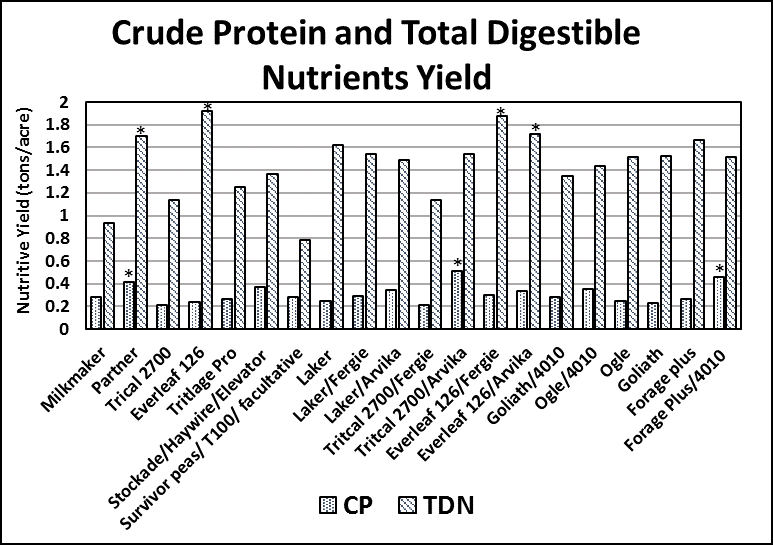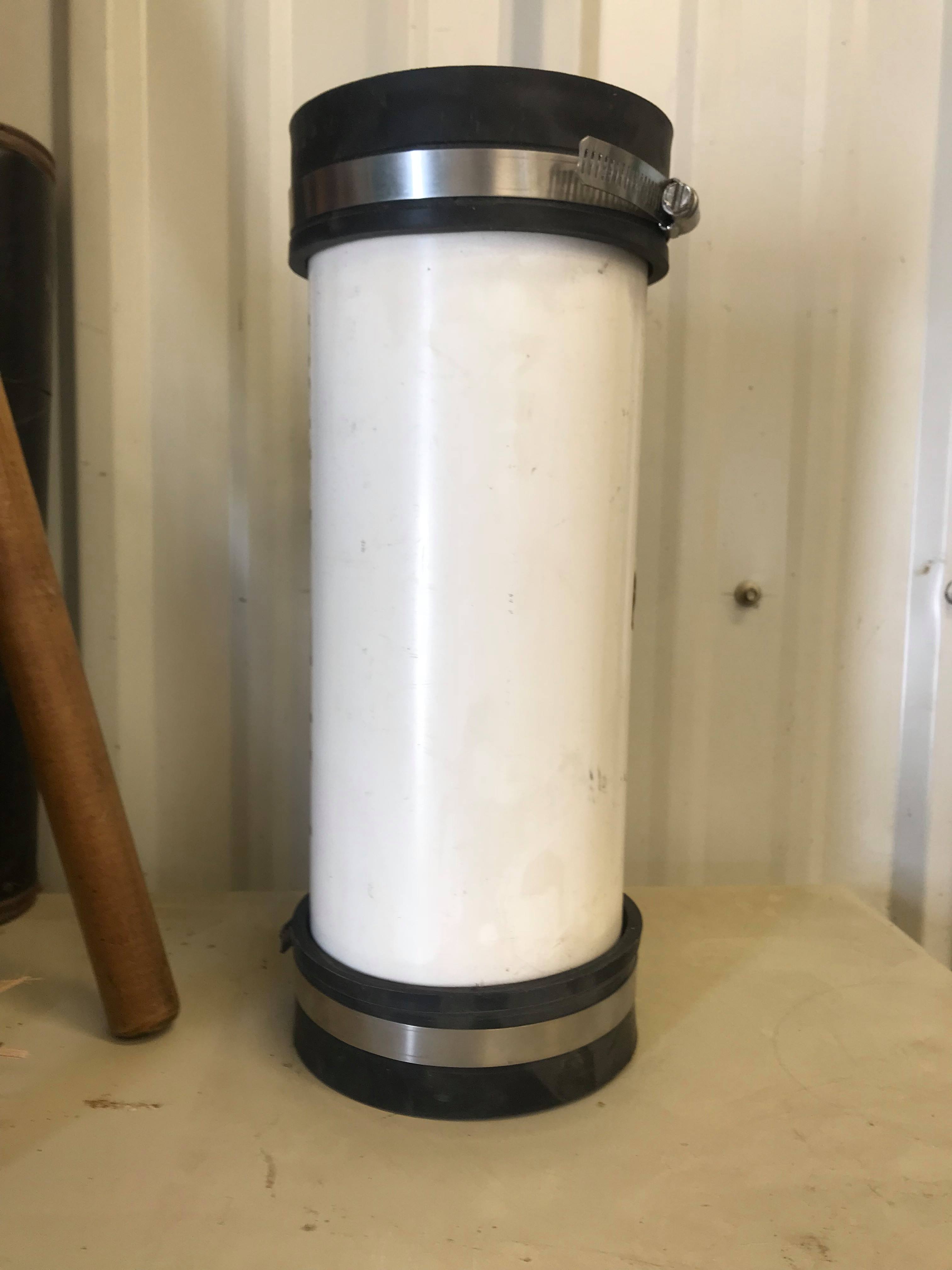2018 Upper Peninsula pea and small grain variety trial
Our goal was to evaluate species mixtures and varietal performance of pea, oat and triticale on yield and nutrient content.

Michigan State University Extension received funding through Project GREEEN to evaluate small grain varieties with and without peas at the Upper Peninsula Research and Extension Center in Chatham, Michigan. Our objective was to inform farmers on mixtures and variety selection to optimize their yield and feed value. Twenty-two entries donated by seed dealers in the northern Michigan were planted in Chatham on May 8, 2018 (Table 1).
Plot size was 4 by 16 feet and boarders were planted to minimize edge affects. Urea was applied May 8 at 108 pounds per acre. Previous crop was a cover crop mixture of crimson clover and oil seed radish. Growing conditions across the region exhibited higher temperatures and below normal rainfall when compared to a five-year average.
Varieties were harvested when the small grain species reached boot stage, which resulted in several different dates (Table 2). Three quadrat clippings were taken from each treatment. NIR nutrient analysis was done at Dairyland Laboratory. At the time of harvest, plots averaged 15 percent moisture content. No pest damage, lodging or significant weed pressure was observed.
Variety selection is dependent on one’s end goal for the crop. If tonnage is the goal, Everleaf 126 or Everleaf 126/Fergie oat and pea mixture yielded the highest (Table 2). When considering the digestibility and energy content, having low acid detergent fiber (ADF) and a high total digestible nutrients (TDN) is desirable. Acid detergent fiber estimates the amount of plant components that are the least digestible (lignin and cellulose). The Survivor pea mixture had the highest food value due to its high crude protein and digestibility.

To further evaluate the nutritive yield of the varieties, we took the concentration of crude protein and TDN and multiplied it by the dry matter (DM) yield (Fig. 1). Partner, a pea and oat mixture, yielded a large amount of crude protein and total digestible nutrients per acre. No single entry was superior in both yield and nutrient content. Considering the cost of the seed will also play an important role when deciding what species and variety to select.
As a demonstration, we selected the top eight entries and ensiled them in mini-silos (Fig. 2) for three months. Table 3 is a summary of the nutrient results for the ensiled oats and oat/pea mixtures.

|
Table 1. Summary of entries received for 2018 pea and small grain variety trial. | ||||
|---|---|---|---|---|
|
Variety |
Species |
Source |
Seeding Rate, lbs/ac |
Grain/pea, % of mix |
|
Jerry |
Oat |
Public |
96 |
-- |
|
Milkmaker |
Triticale/Pea |
Cisco |
100 |
50/50 |
|
Partner |
Oat/Pea |
Cisco |
100 |
50/50 |
|
Trical 2700 |
Spring Triticale |
Wolf River |
100 |
-- |
|
Everleaf 126 |
Oat |
Wolf River |
96 |
-- |
|
Tritlage Pro |
Triticale/Pea |
Byron |
100 |
-- |
|
Stockade/Haywire/Elevator |
Pea/Oat/Triticale |
Cisco |
100 |
-- |
|
Survivor peas/ T100 facultative |
Peas/Triticale |
Cisco |
100 |
50/50 |
|
Laker |
Oat |
Wolf River |
96 |
-- |
|
Laker/Fergie |
Oat/Pea |
Wolf River |
100 |
60/40 |
|
Laker/Arvika |
Oat/Pea |
Wolf River |
100 |
60/40 |
|
Tritcal 2700/Fergie |
Oat/Pea |
Wolf River |
100 |
50/50 |
|
Tritcal 2700/Arvika |
Oat/Pea |
Wolf River |
100 |
50/50 |
|
Everleaf 126/Fergie |
Oat/Pea |
Wolf River |
100 |
60/40 |
|
Everleaf 126/Arvika |
Oat/Pea |
Wolf River |
100 |
60/40 |
|
Goliath/4010 |
Oat/Pea |
CPS |
100 |
60/40 |
|
Ogle/4010 |
Oat/Pea |
CPS |
100 |
60/40 |
|
Ogle |
Oat |
CPS |
96 |
-- |
|
Goliath |
Oat |
CPS |
96 |
-- |
|
Forage plus |
Oat |
Wolf River |
96 |
-- |
|
Forage Plus/4010 |
Oat/Pea |
Wolf River |
100 |
-- |
|
Table 2. Summary of harvest time, yield and nutrient content by variety. | ||||||
|---|---|---|---|---|---|---|
|
Variety |
Harvest date (boot stage) |
Yield (DM tons/acre) |
Crude Protein, % |
ADF1, % |
TDN1, % |
RFV1 |
|
Jerry |
6/22 |
2.38 |
N/A |
|||
|
Milkmaker |
6/29 |
1.46 |
20.5* |
28.5* |
67.4* |
148.0 |
|
Partner |
7/2 |
2.55 |
16.0 |
33.2 |
66.0 |
120.6 |
|
Trical 2700 |
7/2 |
1.76 |
12.4 |
31.8 |
66.3 |
106.0 |
|
Everleaf 126 |
7/11 |
2.94* |
8.3 |
32.8 |
66.0 |
105.5 |
|
Tritlage Pro |
7/2 |
1.93 |
13.8 |
34.1 |
65.6 |
107.6 |
|
Stockade/Haywire/Elevator |
7/2 |
2.12 |
17.5 |
32.2 |
66.2 |
126.7 |
|
Survivor peas/ T100/ facultative |
6/28 |
1.17 |
24.1* |
27.4* |
67.7* |
173.4* |
|
Laker |
7/2 |
2.56 |
10.0 |
34.5 |
65.5 |
100.2 |
|
Laker/Fergie |
7/2 |
2.37 |
12.3 |
35.4 |
65.2 |
102.2 |
|
Laker/Arvika |
7/2 |
2.33 |
15.3 |
34.2 |
65.6 |
114.0 |
|
Tritcal 2700/Fergie |
7/2 |
1.71 |
12.5 |
33.0 |
66.0 |
109.2 |
|
Tritcal 2700/Arvika |
7/3 |
2.26 |
21.7* |
31.5 |
66.4 |
135.5 |
|
Everleaf 126/Fergie |
7/13 |
2.95* |
10.4 |
36.9 |
64.8 |
96.8 |
|
Everleaf 126/Arvika |
7/13 |
2.67 |
12.6 |
36.1 |
65.0 |
102.3 |
|
Goliath/4010 |
6/29 |
1.97 |
13.7 |
29.3* |
67.1* |
129.7 |
|
Ogle/4010 |
6/28 |
2.12 |
16.5 |
30.3 |
66.8 |
132.4 |
|
Ogle |
6/28 |
2.34 |
10.7 |
31.5 |
66.4 |
114.2 |
|
Goliath |
6/29 |
2.26 |
10.1 |
30.0* |
66.9* |
118.9 |
|
Forage plus |
7/2 |
2.51 |
10.2 |
33.5 |
65.8 |
108.3 |
|
Forage Plus/4010 |
7/2 |
2.34 |
20.0* |
32.8 |
66.0 |
134.1 |
|
1 Acid Detergent Fiber (ADF), Total Digestible Nutrients (TDN), Relative Food Value (RFV) |
||||||
|
Table 3. Nutrient summary of ensiled oat and pea and oat mixtures for demonstration purposes. | |||||||
|---|---|---|---|---|---|---|---|
|
Variety |
Moisture % |
pH |
Crude protein % |
Acid detergent fiber % |
Ash free neutral detergent fiber % |
Total digestible nutrients % |
Relative food value |
|
Partner |
70.3 |
4.62 |
9 |
37.91 |
54.82 |
64.45 |
100.79 |
|
Everleaf 126 |
73.41 |
4.52 |
7.45 |
41.32 |
68.22 |
63.4 |
77.37 |
|
Laker |
68.82 |
4.89 |
9.38 |
39.72 |
61.48 |
63.89 |
87.61 |
|
Everleaf 126/Fergie |
70.72 |
5.27 |
8.8 |
43.39 |
63.07 |
62.75 |
81.16 |
|
Everleaf 126/Arvika |
72.31 |
4.62 |
10.45 |
38.89 |
54.38 |
64.15 |
100.39 |
|
Ogle/4010 |
63.49 |
4.51 |
8.75 |
42.9 |
61.38 |
62.91 |
84.3 |
|
Forage Plus |
66.17 |
4.39 |
10.24 |
39.85 |
52.9 |
63.85 |
101.82 |
|
Forage Plus/4010 |
71.59 |
4.83 |
11.34 |
38.06 |
51.38 |
64.41 |
107.48 |
Special acknowledgement to the staff at the MSU Upper Peninsula Research and Extension Center for their work on this trial, including Christian Kapp and Andy Bahrman.
For questions related to this research project, please contact Monica Jean, MSU Extension field crops educator, at 906-786-3032 or atkinmon@anr.msu.edu.



 Print
Print Email
Email




